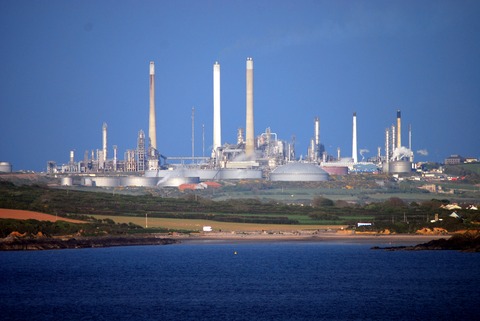The next Milford Haven?
17 Dec 2014

Oil prices may be tumbling, Russia may be brought to its knees, but for Europe’s refineries little has changed.
Margins remain as tight as ever, driven by a systemic overcapacity of petrol production and under-production of diesel.
In November Murphy Oil’s Milford Haven refinery in Pembrokeshire became the latest European refinery to succumb to market pressures.
By 2018 we need to decrease crude runs in Europe by 1.6 million barrels per day – that’s twelve Milford Havens
Wood Mackenzie’s Jonathan Leitch
Milford Haven was the third UK refinery to close in the past five years, following the closure of Petroplus’ Coryton refinery in 2012 and Teesside refinery in 2009.
With these three closures the UK has lost 445,000 barrels per day (bpd), one quarter of its refining capacity.
And yet, as far as the whole of Europe is concerned, some say the closures to date haven’t gone far enough.
Speaking to Process Engineering for our January 2015 cover feature, Wood Mackenzie downstream principal analyst Jonathan Leitch said that his firm’s modeling showed that “by 2018 we need to decrease crude runs in Europe by 1.6 million barrels per day – that’s twelve Milford Havens”.
While he pointed out that the UK’s top refineries are among the most advanced in the world, he also admitted that the closures needed to bring European production back to equilibrium wouldn’t necessarily come at the weakest refineries.
“There are some smaller loss-making refineries where, if they close down that’s the end of their business, and for that reason they continue to operate,” he said.
“At the other end, some of the major oil companies may own several refineries across Europe. The two or three they choose to close down will not be the worst in Europe.”
For these reasons, further UK refinery closures cannot be ruled out.
At risk
Most at risk would appear to be the country’s two smallest refineries.
Total tried and failed to sell its 200,000 bpd Lindsey refinery in Killingholme, North Lincolnshire in 2011, and while it has since committed to investing in the plant and keeping it operational, there are worrying echoes of Milford Haven’s situation – like the Pembrokeshire plant, which had the larger, better connected Valero Pembroke refinery for a neighbour, Lindsey too has a local big brother in the form of the 221,000 bpd Phillips 66 Humber refinery.
Meanwhile, there was speculation in the summer that Indian company Essar was trying to sell its Stanlow refinery in Ellesmere Port. The company dismissed talk of a sale as nothing but rumours, but following the mothballing of a crude distillation unit at the plant in September and subsequent closure of Milford Haven, Stanlow is now the country’s smallest refinery at 195,000 bpd, and must therefore be considered at risk in an industry where it is generally the largest, most complex plants that are most likely to survive.
No matter what the oil price does, there seems little respite for refiners in the year to come.

